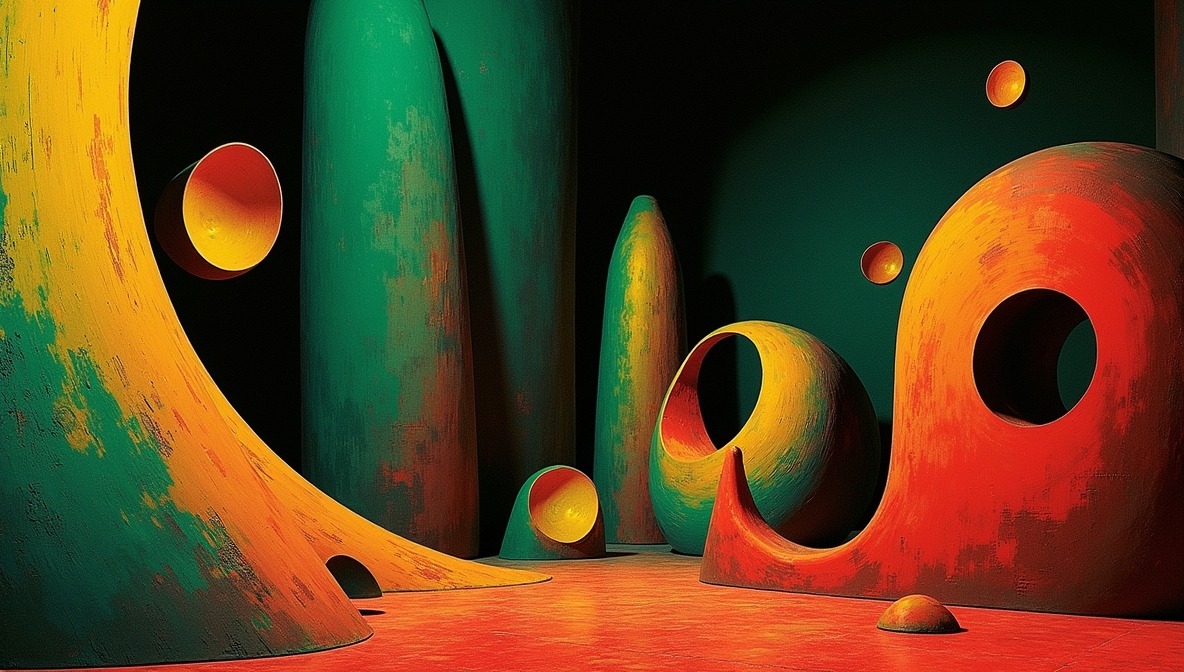Avant-garde movements have challenged artistic conventions, introduced radical ideas, and reshaped the way art is created, perceived, and experienced. From Dadaism’s rebellion against reason to Abstract Expressionism’s emotional intensity, these movements have disrupted traditions, encouraged experimentation, and expanded the boundaries of artistic expression.
The Foundations of Avant-Garde Art
The avant-garde has always pushed against established norms. Emerging in the late 19th and early 20th centuries, artists sought to reject traditional aesthetics in favor of new, often provocative forms. This shift led to movements that questioned the role of art, the artist, and the audience.
Key Characteristics of Avant-Garde Art
- Rejection of Tradition – Breaking away from classical techniques and established rules.
- Innovation in Form and Medium – Experimenting with materials, methods, and presentation.
- Political and Social Engagement – Addressing cultural, societal, and ideological issues.
- Unconventional Aesthetics – Favoring abstraction, distortion, and non-representational forms.
Movements That Changed Artistic Expression
1. Impressionism (1860s–1890s)
Impressionism broke away from the rigid academic styles of the 19th century, favoring loose brushwork, vibrant colors, and depictions of light and movement. Artists such as Claude Monet, Edgar Degas, and Pierre-Auguste Renoir painted fleeting moments, capturing the essence of modern life. The emphasis on perception over realism laid the groundwork for future experimental movements.
2. Cubism (1907–1920s)
Cubism, pioneered by Pablo Picasso and Georges Braque, shattered the conventions of perspective. Objects were deconstructed and reassembled into geometric forms, challenging the viewer’s understanding of space and depth. This approach influenced architecture, design, and later movements like Futurism and Constructivism.
3. Futurism (1909–1944)
Futurism celebrated speed, technology, and modernity. Originating in Italy, artists like Umberto Boccioni and Giacomo Balla depicted movement through dynamic compositions. The movement’s fascination with industrial progress influenced graphic design and performance art.
4. Dadaism (1916–1924)
Born from the chaos of World War I, Dadaism rejected reason, logic, and traditional artistic values. Marcel Duchamp, Hannah Höch, and Tristan Tzara used absurdity, chance, and satire to challenge societal norms. The movement’s emphasis on conceptual art paved the way for Surrealism and later experimental forms.
5. Surrealism (1924–1966)
Surrealists explored the subconscious, dreams, and irrational imagery. Inspired by Sigmund Freud’s theories, artists like Salvador Dalí, René Magritte, and Max Ernst created bizarre, dreamlike scenes. Their approach influenced film, literature, and contemporary digital art.
6. Abstract Expressionism (1940s–1950s)
Abstract Expressionism emerged in post-war America, emphasizing spontaneity and emotional depth. Jackson Pollock, Mark Rothko, and Willem de Kooning pioneered gestural painting and color fields, shifting the center of the art world from Paris to New York. Their works encouraged new forms of artistic freedom.
7. Pop Art (1950s–1970s)
Pop Art blurred the lines between commercial culture and fine art. Artists like Andy Warhol, Roy Lichtenstein, and Claes Oldenburg used imagery from advertisements, comic books, and mass media. The movement questioned consumerism and celebrity culture, influencing visual aesthetics in fashion, marketing, and design.
8. Minimalism (1960s–1970s)
Minimalism stripped art down to its essential forms. Artists such as Donald Judd, Dan Flavin, and Frank Stella rejected personal expression in favor of clean lines, repetition, and industrial materials. The movement’s influence can be seen in architecture, graphic design, and contemporary installations.
9. Conceptual Art (1960s–Present)
Conceptual artists prioritized ideas over aesthetics. Sol LeWitt, Joseph Kosuth, and Yoko Ono created works where the concept mattered more than the physical object. This shift led to performance art, installations, and interactive media.
10. Contemporary Avant-Garde Movements
Today’s avant-garde extends into digital art, AI-generated works, and bio-art. Artists experiment with virtual reality, data visualization, and biotechnology, continuing to push creative boundaries.
How Avant-Garde Movements Influence Art Today
- Breaking Creative Limits – Encouraging artists to challenge norms and experiment.
- Expanding Art Forms – Introducing new media, from digital installations to AI-generated art.
- Shaping Cultural Discourse – Addressing social, political, and technological themes.
- Redefining Artistic Roles – Blurring the lines between artist, audience, and medium.
Avant-garde movements have continuously reshaped artistic expression, leaving lasting impacts on how art is created, viewed, and understood. Their influence extends beyond galleries, shaping design, media, and cultural narratives.



